Over the last 30 years that I have been involved in the fitness industry, the advent of technology has greatly improved the quality and variety of exercise equipment. Weight stack machines that are designed to target and isolate individual muscles have become more popular in commercial gyms than typical free weights. They are user-friendly and fun to use to sculpt male and female bodies. As popular as they have become, they have not replaced free weights. An assortment of free weights are still found in all commercial gyms. The question that I have been asked most often is “ what are better machines or free weights?” There are fundamental differences between the two, and the benefits and disadvantages are the fodder for debate to determine which is better for an avid fitness person or a bodybuilder.
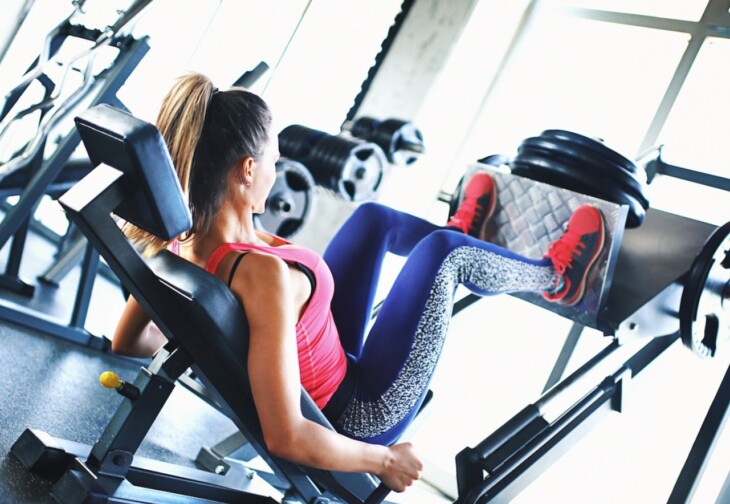
Source: Well+Good
Contents
- Defining the difference between free weights and resistance machines
- Resistance machines, the differences
- Which works better?
- What trainers say about free weights versus exercise machines
- Free weights
- Studies and results
- The studies included and reviewed for the article were:
- A recap: free weight versus exercise machine
- Women and weight lifting
Defining the difference between free weights and resistance machines
When we look at the differences between machine workouts and free-weight workouts, we see the vast difference between these workout tools. They both offer advantages and provide results, but there are significant differences between the two systems. Free weights are mainly dumbbells or barbells– which you pick up and you control the movement to perform different exercises. Using exercise machines which contain weight stack resistance, allow you to perform exercises that specifically target individual body parts by following the machines movement pathway without the requirement of any physical coordination.
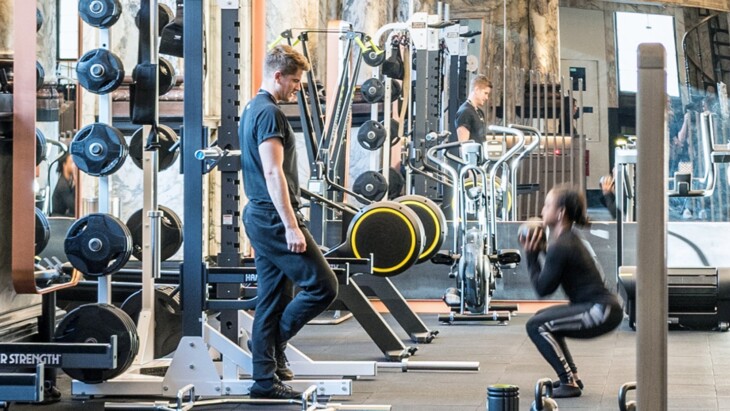
Source: Medium
Resistance machines, the differences
Resistance machines come in two different systems, the weight stack loaded and the plate system. Using a weight stack-loaded resistance machine, the exerciser will select the weight by simply inserting the selector pin in the rectangular weight plate to increase or decrease the resistance. On the other hand, plates must be retrieved and added to the machine to increase weight resistance. When adding resistance, the pin-loaded exercise machine uses plates that are more convenient because they are already on the machine. For a serious exerciser who uses the “pyramid” or “drop style” workouts, this is the best equipment to use because you can change the weights quickly. You maintain your position at the specific station you are working out on.
The key difference between free weights and exercise machines is that free weights can be used in many different positions rather than a static exercise that occurs when using an exercise machine. Using free weights means using more muscles – in particular, stabilizing muscles. When trying to control the weight, you are moving the stabilizer muscles to exert maximum weight control instead of the exercise machine that demands little coordination from the stabilizer muscles. Exercise machines provide the user the advantage of securing the weight you are working with to prevent injury and harm during the exercise.
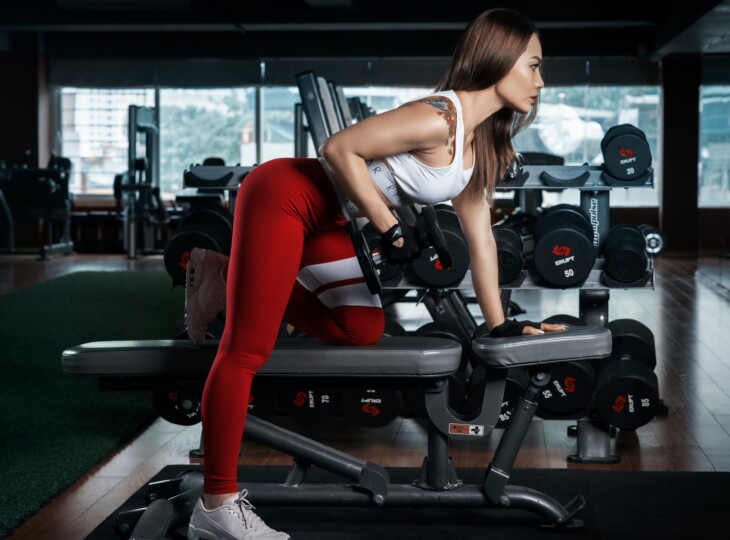
Source: unsplash.com
Which works better?
As mentioned, free weights bring into play more muscles to achieve workout results. The activation of additional muscles adds to muscle building potential because of the added stress on more muscle groups. Using free weights can be somewhat risky – when your workout is concluding, you are fatigued and maintaining form with free weights can be injurious if you lose control of the dumbbell or barbell. Exercising on machines is safer than using free weights. An exercise machine controls the weight and protects the exerciser from an injury that comes with a loss of control of the weight they are working with. When working with different muscle groups, some will be stronger than others; that is a given. When working with free weights, it is possible to injure weaker muscles. On the other hand an exercise machine is perfect for working weaker muscle groups in a safe manner. When exercising weaker muscles, you can improve them to the same level of dominant stronger muscles under control without the risk of injury. In my experience using both machines and free weights will yield the best results when building solid muscles.

Source: Business Magazine
What trainers say about free weights versus exercise machines
When working out, using free weights or exercise machines, both provide results, but the differences are stark. In an article on Well and Good website, fitness tips, “Trainers Explain When to Actually Use Weights versus Machines in the Gym,” posted last year, trainers have ‘weighed’ the differences and how they manifest themselves in workout routines.
“Exercise machines typically take your body through the range of motion—a machine will take you through the same line of motion with each and every repetition from starting point to ending point,” says Bodybuilding Champion Frank Calta
One thing about weight training, professional trainers need to know how using both will benefit workout enthusiasts and what advantages they bring to their workout like John Cardillo’s Premier Fitness Systems found on KarmelMall.net
“While strength training with machines and with free weights both have their benefits, there are a few major differences to note before deciding which one to use,” says Jason Wags lead trainer and co-founder of Caltas Fitness Studio.
Wags said there are many perks to derive from exercise machines that you don’t get from free weights.
“The difference is that using machines, fewer muscles are used” he explains. “This isn’t a bad or good thing. If after squats, the legs stabilizer muscles are fatigued, you can do leg curls without having to rely on those muscles again.”
Wags also said that you could move more weight more efficiently when you use exercise machines.
“One of the main upsides is that machines are much easier to learn how to use and you are able to lift heavier weights due to a fixed range of motion which limits the help of other muscle groups,” says Wags.
Another trainer, Vincent Okeefe added more detail to debates around free weights and exercise machines.
“You can regard it as an exercise that is isolated more as opposed to free weights.” Okeefe adds that “you’re getting more support because of the machine itself is targeting muscle groups that you want to exercise, which makes using machines much easier. Also you can lift heavier weight because some of the resistance is not being supported by your body, and instead by the machine” he says.
Free weights
The reason they call them free weights is that you have a “free range of motion and total control due to being able to move the weights in any direction you want,” Wags explains.
“Using barbells and dumbbells allows you to work all muscle groups, as well as strengthening major stabilizer muscles,” says Wags “This also helps improve coordination and strengthen your overall body.”
Wags added, “when you perform a workout at your bob or at home you won’t have your back against an immovable object to help you. To get the best results out of the free weight workout you need form, stability, form, mobility and technique”

Source: unsplash.com
Studies and results
One study conducted by Old School Labs that examined the use of free weights and exercise machines published an interesting observation. In an article that appeared on their website in 2019 – “Free Weights vs. Machines: What is Best for Your Body,” found that “one group of the men used free weights during the study period while the rest used machines. Muscle mass, thickness, and strength were tested both before and after the study. The interesting difference was that testosterone levels in men in the free weights group were higher during training sessions.”
The website, Trainers Essentials took a deep dive into the studies and looked at several studies for the article.
The studies included and reviewed for the article were:
- Comparison Of Muscle Force Production Using The Smith Machine And Free Weights For Bench Press And Squat Exercises (Cotterman et al., 2005).
- Machines Versus Free Weights (Santana, 2001).
- Considerations in Gaining A Strength-Power Training Effect (Machines Vs Free Weights) (Stone, 1982).
- Kinetic Comparison of Free Weight and Machine Power Cleans (Murry et al., 2008).
- The Effects of Training with Free Weights or Machines on Muscle Mass, Strength, and Testosterone and Cortisol Levels (Schwanbeck, 2008).
- A Comparison of Muscle Activity Between A Free Weight and Machine Bench Press (McCaw & Friday, 1994).
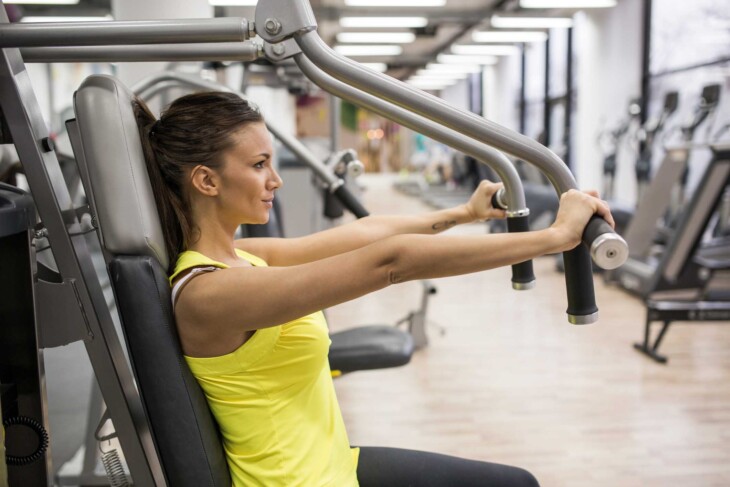
Source: Verywell Fit
The summary of the studies that pitted free weights against exercise machines provided interesting results that all exercisers can benefit from. The summary from the article “What’s the Difference Between Free Weights and Machines?” is illuminating.
- Cotterman – The squat 1RM was greater for the Smith Machine than the free weights. However, the bench 1RM was greater for free weights than the Smith Machine.
- Santana – For optimum performance enhancement, use an integrated approach to training using all available tools appropriately.
- Stone – Free weights have numerous advantages over machines.
- Murry – Maximum strength (1RM) and average power were significantly greater for the free weight condition, whereas peak velocity and average velocity were greater for the machine condition.
- Schwanbeck – training with free weights or machines results in similar increases in muscle mass and strength and testosterone to cortisol ratio.
- McCaw – results suggest greater muscle activity during the free weight bench press compared with selectorized.
A recap: free weight versus exercise machine
Your fitness goal will drive your exercise routine, and your experience will dictate which exercise program you will use. The studies listed above and many articles from trusted sources indicate free weights are better for a more experienced weight trainer. Exercise machines for beginners are the best way to get started on a program because selectorized usage is safer for a novice lifter.
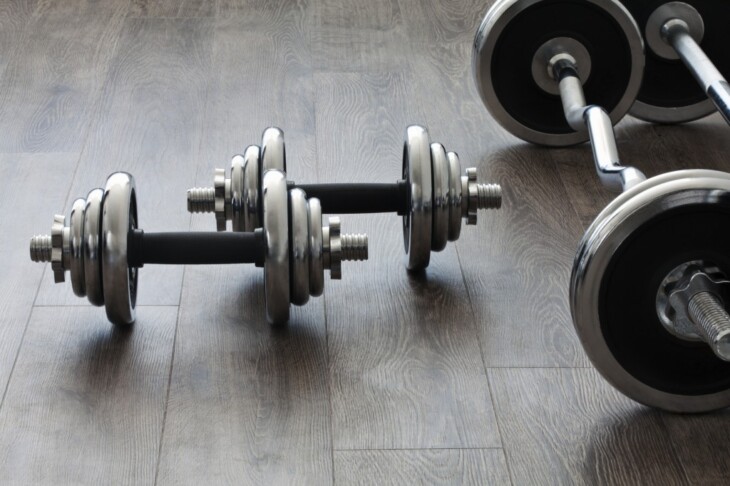
Source: Simply Gym
Women and weight lifting
Women and men have goals for fitness involving weight training. One goal is improved strength, and the other is developing a sculpted body. For women, they are limited in the size of muscle that they can gain from weight training workouts. Muscle building relies on testosterone manufacturing, and women produce a lot less testosterone than men. The process for women to put on lean muscle is a lot longer than for men; the ratio of muscle building is approximately one pound of muscle per month, so that the process will be long and arduous
Jason Wags offers tips to women who are interested in bodybuilding:
- Have a professional trainer design a workout plan for you
- Don’t miss workouts. Consistency is important
- Eat a healthy diet
- Train with hi-Intensity
- Record every workout
The same results hold true for women and men when they work out. Novice lifters should learn proper form on free weight exercises and they should mainly use machines until they develop muscle strength.
“Oftentimes, men and women give up on programs because they do not see immediate results. It may take 18 to 36 weeks or longer to see a visual difference, the key is to keep at it,” Wags wrote in the blog.
Many women at the gym find free weight intimidating for a host of reasons. The simplicity that an exercise machine offers is that you step up to it and use it as intended; you will find the form you are looking for.
In a blog post from Very Well Fit, “The Benefits of Lifting Weights for Women,” stated some critical facts.
“Women in their 70s and 80s have built up significant strength through weight training, and studies show that strength improvements are possible at any age. It is vital for women to develop and maintain strength as they age to prevent injury and stave off bone loss and osteoporosis,” according to the conclusions in the article.

Source: Healthline
But what can be said about the free weights versus exercise machines is that both types of workouts have benefits for an exerciser – man or woman. Both systems can be used to maximum advantage and offer excellent results. But what it comes down to is this, your brain is your biggest muscle and the best one to use when developing your workout routine to build strength and lean muscle.
